

Iguazu Falls
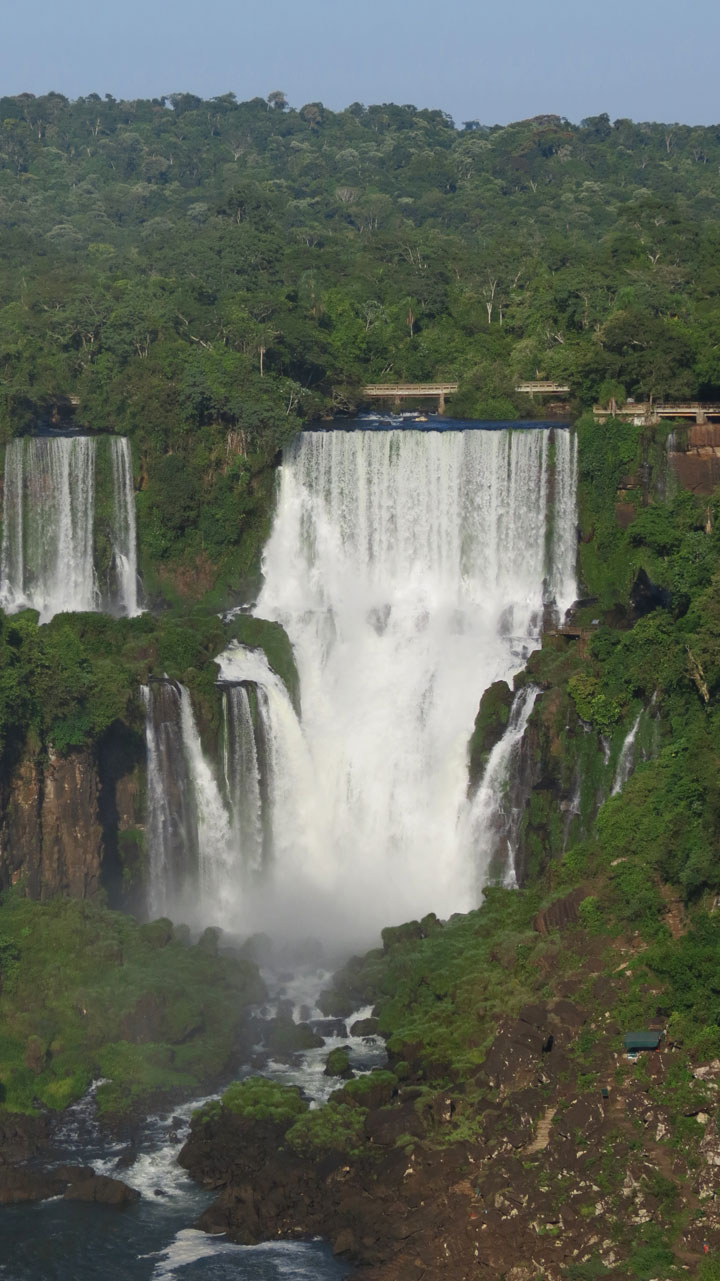
Iguazu Falls, Iguassu Falls, or Iguašu Falls (Portuguese: Cataratas do Iguašu ; Spanish: Cataratas del Iguaz˙ ; Guarani: Chororo Yguasu are waterfalls of the Iguazu River located on the border of the Brazilian State of Paranß and the Argentine Province of Misiones. The falls divide the river into the upper and lower Iguazu. The Iguazu River originates near the city of Curitiba. It flows through Brazil for most of its course. Below its confluence with the San Antonio River, the Iguazu River forms the boundary between Brazil and Argentina.
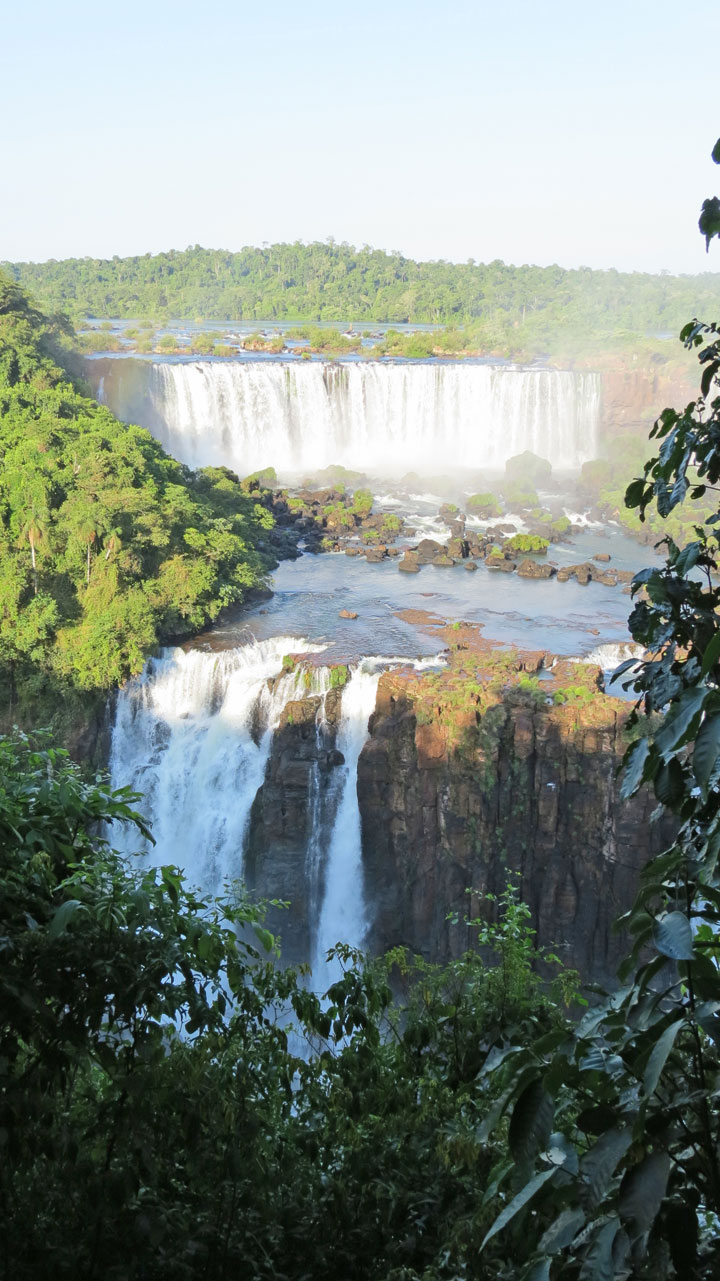
The name "Iguazu" comes from the Guarani or Tupi words y, meaning "water", and
űas˙, meaning "big". Legend has it that a god planned to marry a beautiful woman
named NaipÝ, who fled with her mortal lover Tarobß in a canoe. In rage the god
sliced the river, creating the waterfalls and condemning the lovers to an
eternal fall. The first European to find the falls was the Spanish conquistador
┴lvar N˙˝ez Cabeza de Vaca in 1541.
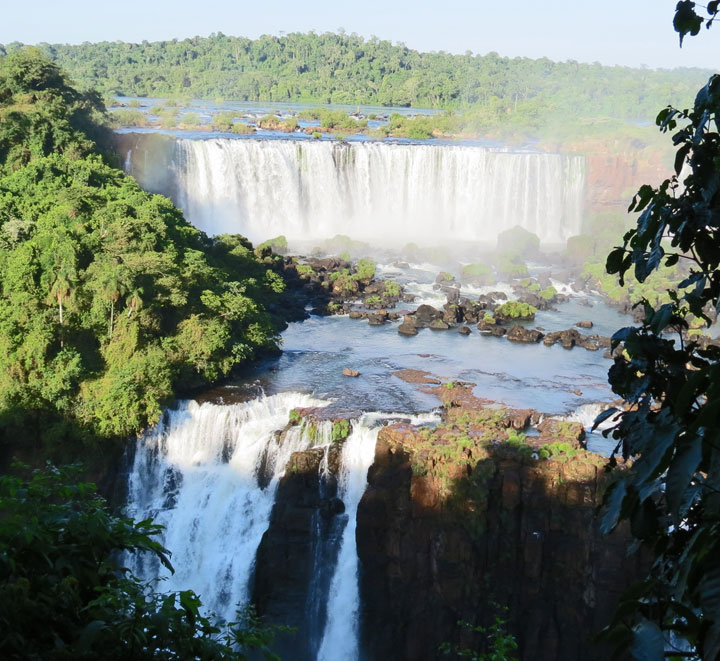
Iguazu Falls is located where the Iguazu River tumbles over the edge of the Paranß Plateau, 23 kilometres (14 mi) upriver from the Iguazu's confluence with the Paranß River. Numerous islands along the 2.7-kilometre (1.7 mi) long edge divide the falls into numerous separate waterfalls and cataracts, varying between 60 metres (200 ft) and 82 metres (269 ft) high. The number of these smaller waterfalls fluctuates from 150 to 300, depending on the water level. About half of the river's flow falls into a long and narrow chasm called the Devil's Throat (Garganta del Diablo in Spanish or Garganta do Diabo in Portuguese). The Devil's Throat is U-shaped, 82-meter-high, 150-meter-wide, and 700-meter-long. Placenames have been given also to many other smaller falls, such as San Martin Falls, Bossetti Falls and many others.
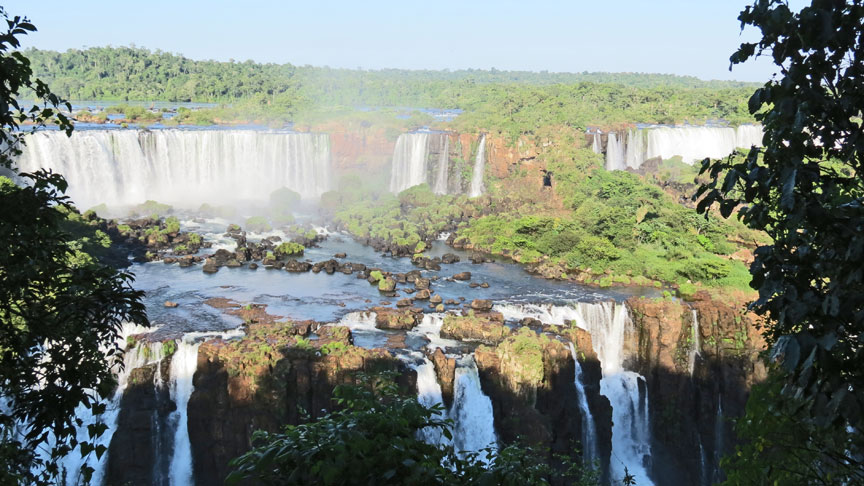
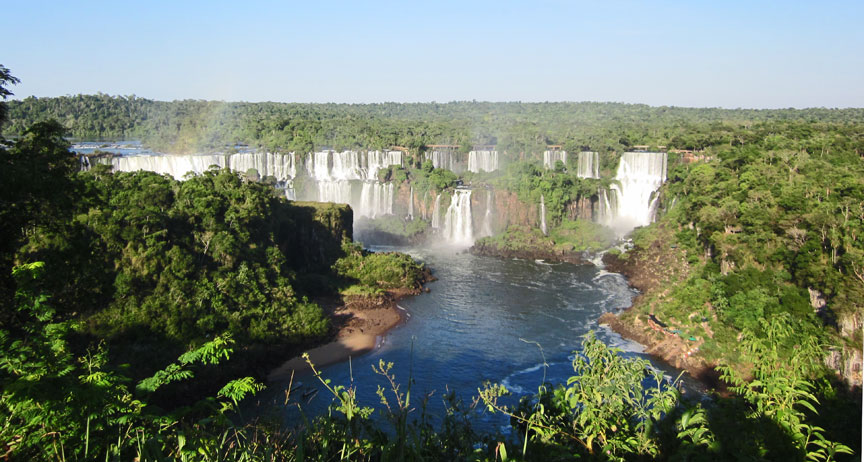
About 900 meters of the 2.7-kilometer length does not have water flowing over
it. The edge of the basalt cap recedes by 3 mm (0.1 in) per year. The water of
the lower Iguazu collects in a canyon that drains in the Paranß River, a short
distance downstream from the Itaipu Dam. The junction of the water flows marks
the border between Brazil, Argentina, and Paraguay. There are points in the
cities of Foz do Iguašu, Brazil, Puerto Iguaz˙, Argentina, and Ciudad del Este,
Paraguay, which have access to the Iguazu River where the borders of all three
countries can be seen, a popular tourist attraction for visitors to the three
cities.
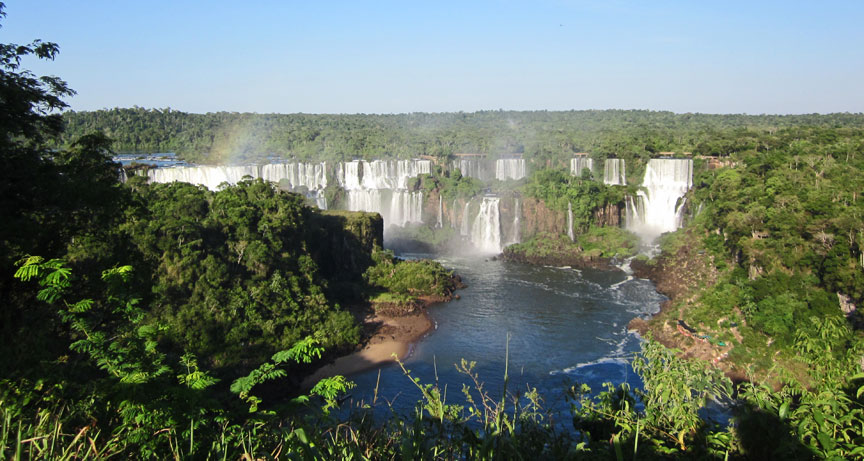

Iguazu Falls are arranged in a way that seems a reverse J. The border between
Brazil and Argentina runs through the Devil's Throat. On the right bank is the
Brazilian territory, which has just over 20% of the jumps of these falls, and
the left side jumps are Argentines, which make up almost 80% of the falls. To
completely and fully appreciate the falls, the recommendation is to visit both
the Argentine and Brazilian side, as one side is a panorama of the other, and
vice versa. Those who know have said, more or less, that "from the Brazilian
side you see the falls, from the Argentinean side you live them"
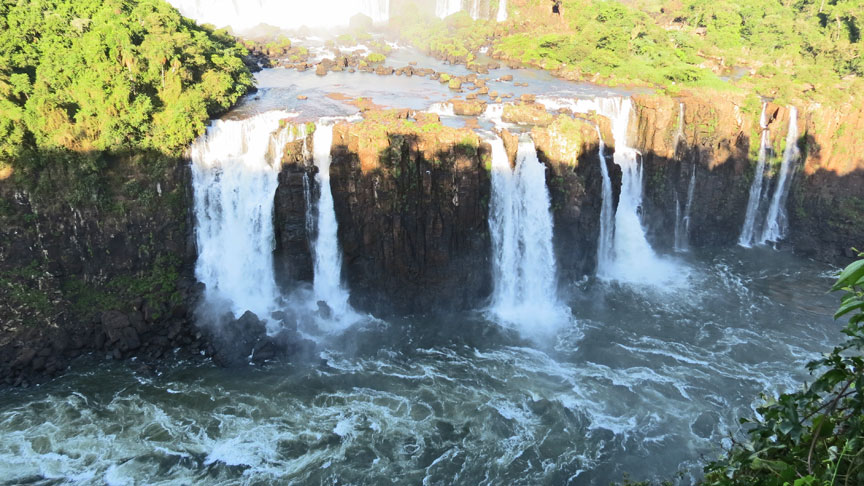
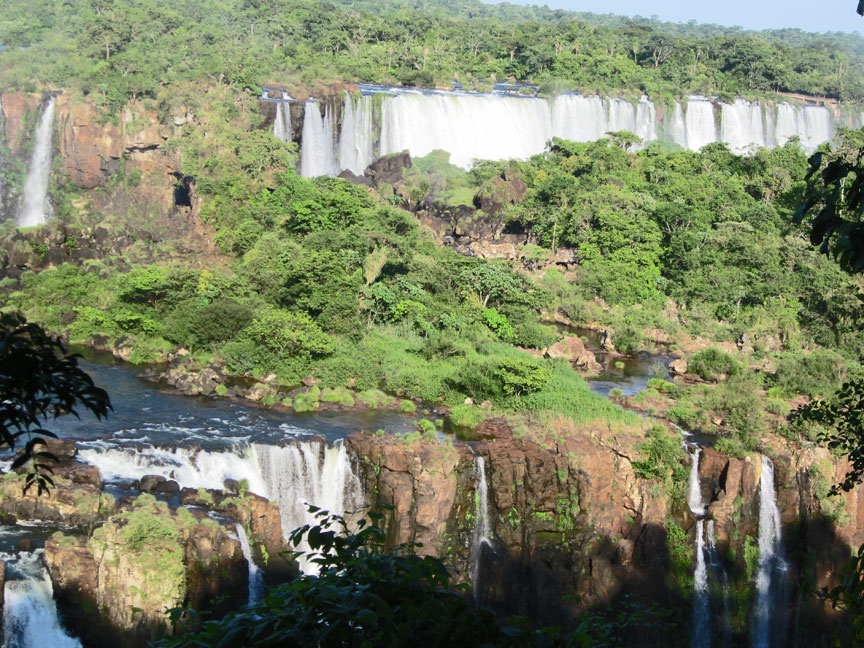
There are two international airports close to Iguaz˙ Falls: the Argentine
Cataratas del Iguaz˙ International Airport (IGR) and the Brazilian Foz do Iguašu
International Airport (IGU). Argentina's airport is 25 kilometers from the city
of Iguazu but closer to the Falls hotels than its Brazilian counterpart.
Brazil's airport is between Foz do Iguašu, Brazil and the falls. LAN Airlines
and AerolÝneas Argentinas have direct flights from Buenos Aires to Iguazu
International Airport Krause and several Brazilian airlines as TAM Airlines, GOL,
Azul, WebJet offer service from the main Brazilian cities to Foz do Iguašu.

Walkways allow close views of the falls from both Argentina and Brazil.
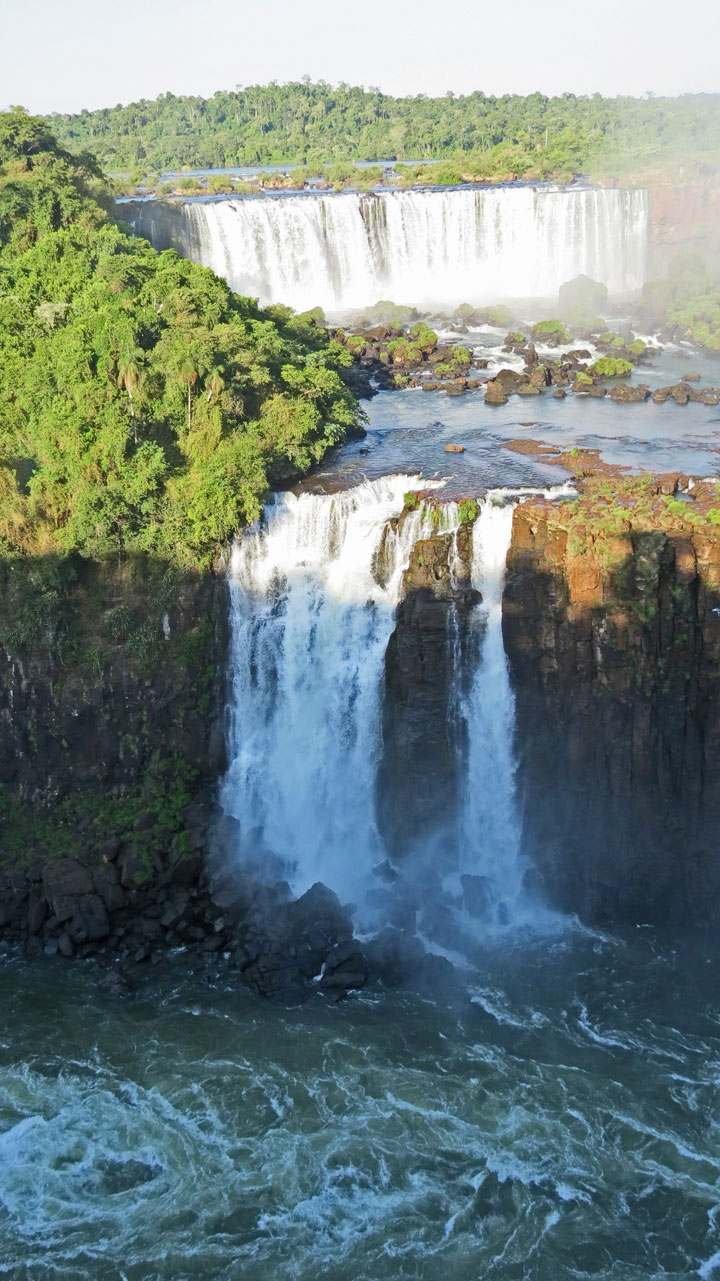
The falls can be reached from the two main towns on either side of the falls:
Puerto Iguaz˙ in the Argentina and Foz do Iguašu in Brazil, as well as from
Ciudad del Este, Paraguay on the other side of the Paranß river from Foz do
Iguašu. The falls are shared by the Iguaz˙ National Park (Argentina) and Iguašu
National Park (Brazil). The two parks were designated UNESCO World Heritage
Sites in 1984 and 1987, respectively.
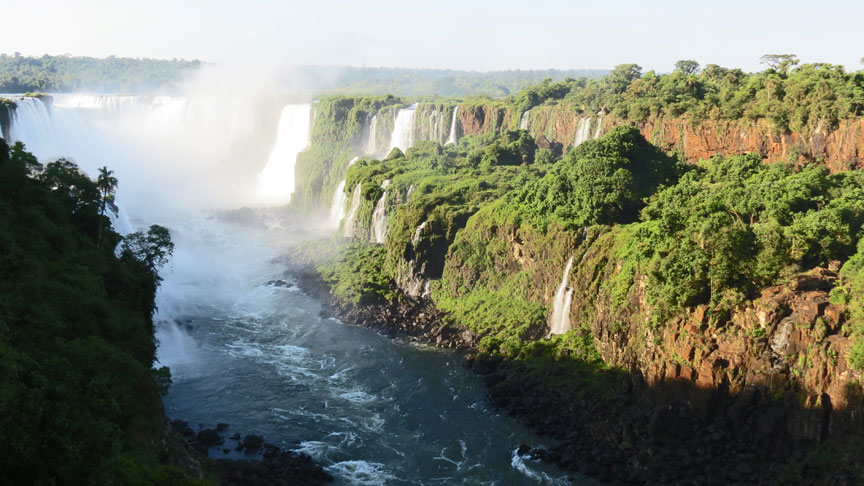
The first proposal for a Brazilian national park aimed at providing a pristine
environment to "future generations", just as "it had been created by God" and
endowed with "all possible preservation, from the beautiful to the sublime, from
the picturesque to the awesome" and "an unmatched flora" located in the
"magnificent Iguaš˙ waterfalls". These were the words used by Andre Reboušas, an
engineer, in his book "Provinces of Paranß, Railways to Mato Grosso and
Bolivia", which started up the campaign aimed at preserving the Iguašu Falls in
1876, when Yellowstone, the first national park on the planet, was four years
old.
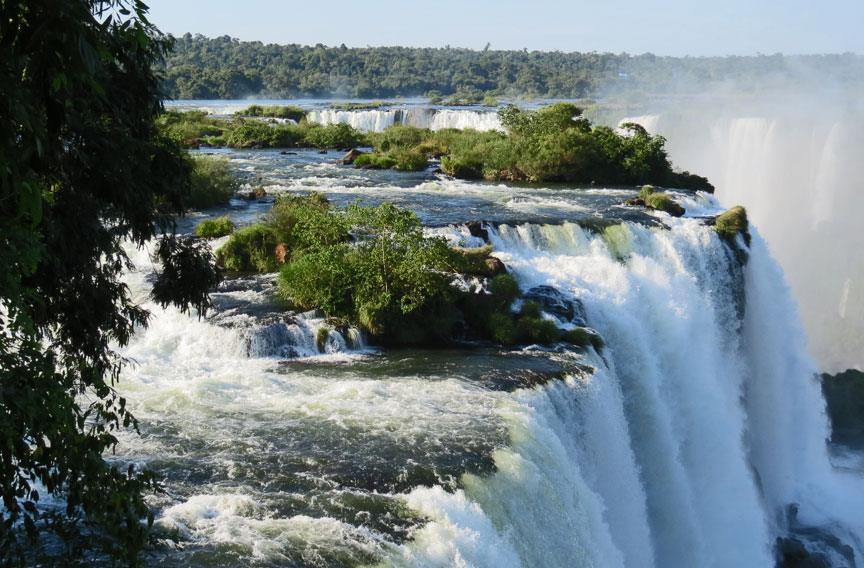
The Argentinian side has wider views of the falls. On the Brazilian side there
is a walkway along the canyon with an extension to the lower base of the Devil's
Throat and helicopter rides offering aerial views of the falls are available.
Argentina has prohibited such helicopter tours because of the environmental
impact on the flora and fauna of the falls.
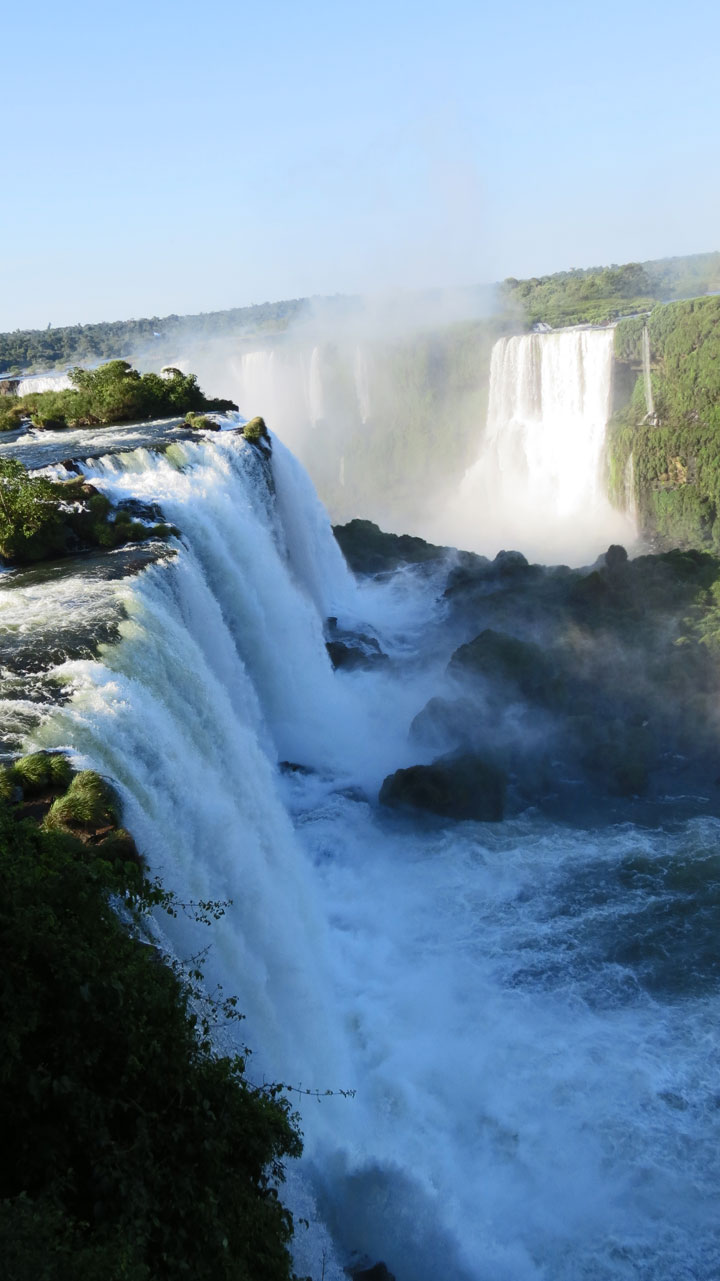
There is an entrance fee to the park on both sides. Free frequent buses are provided to various points within the park. The town of Foz do Iguašu is about 20 kilometres (12 mi) away and the airport is in between the park and the town.
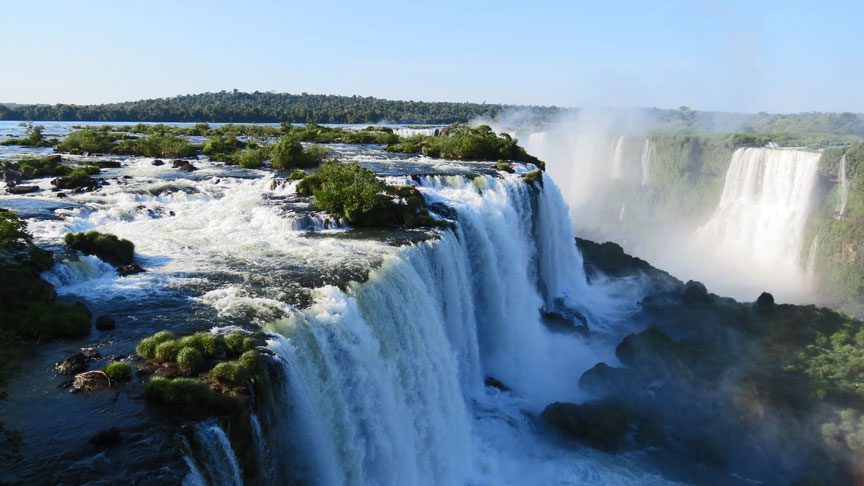
The Brazilian transportation system aims at allowing the increase in the number
of visitors while reducing the environmental impact through the increase in the
average number of passengers per vehicle inside de Park. The new transportation
system boasts new 72 passenger panoramic view double deck buses. The upper deck
is open, which enables visitors a broad view of the flora and fauna during the
trip to the Falls. The buses' combustion systems are in compliance with the
CONAMA (phase IV) and EURO (phase II) emissions and noise requirements. The
reduction in the number of vehicles, of noise levels and of speed is enabling
tourists to observe increasing numbers of wild animals along the route. Each bus
has an exclusive paint scheme, representing some of the most common wild animals
found in the Iguaš˙ National Park, including the spotted jaguars, butterflies,
raccoons, prego monkeys, coral snakes, toucans, parrots and yellow breasted
caimans.
Text from Wikipedia
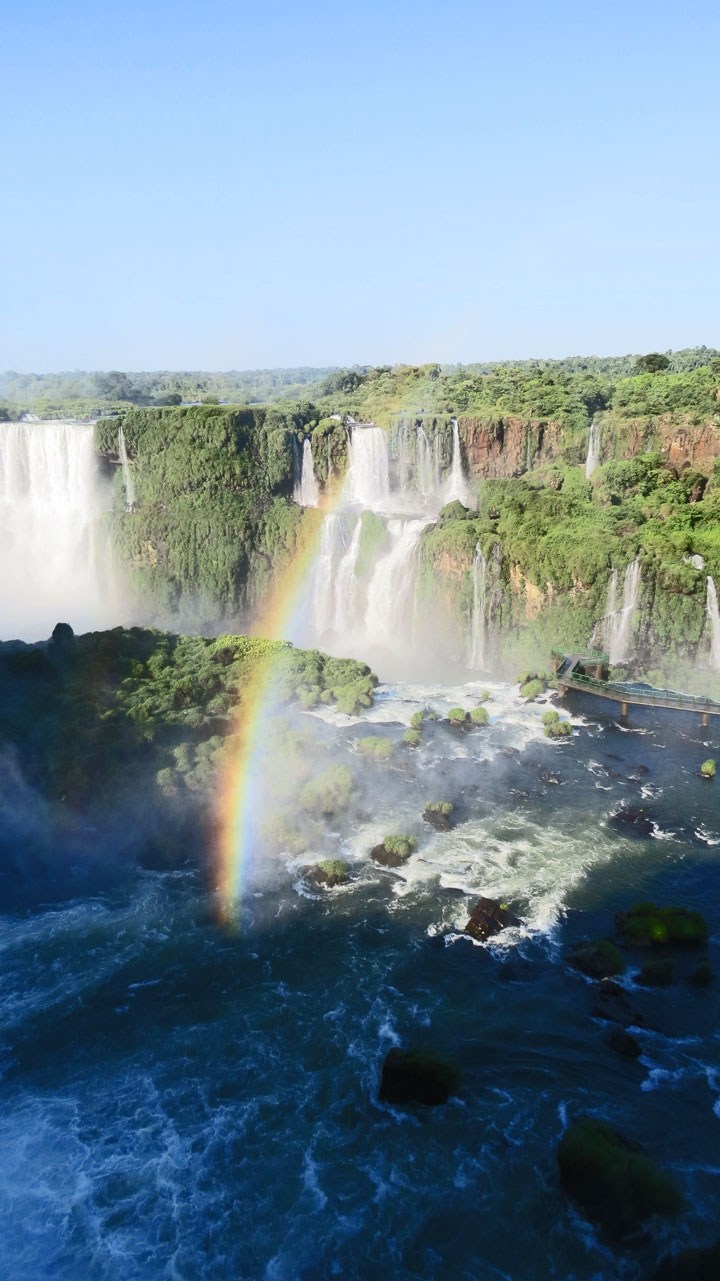
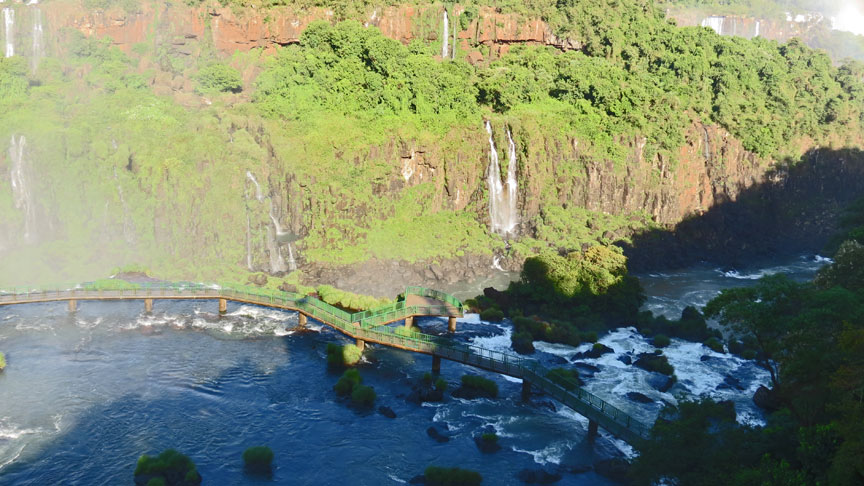
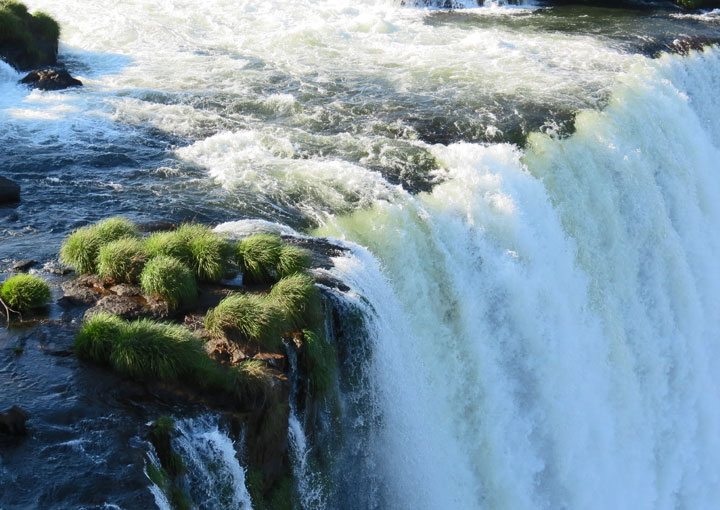

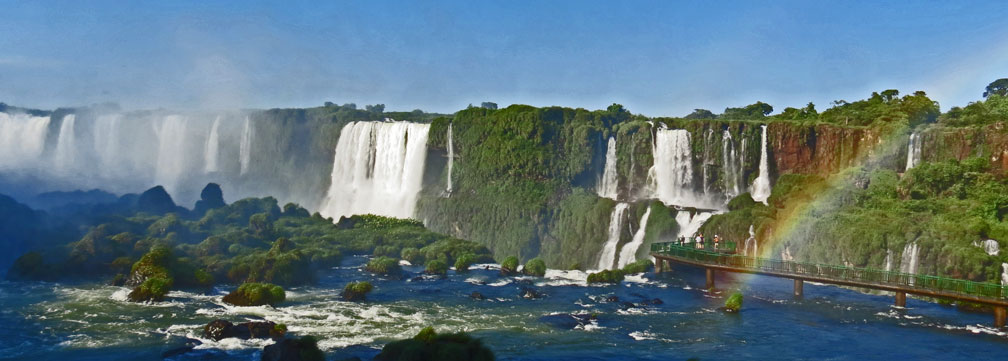
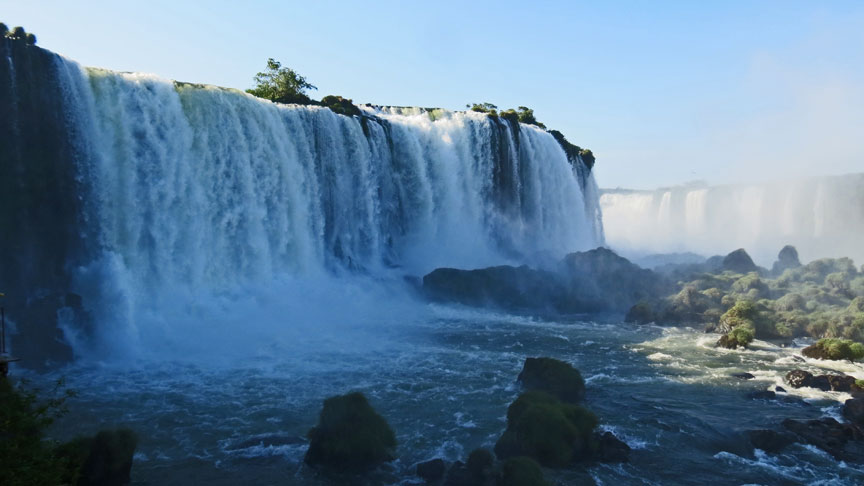
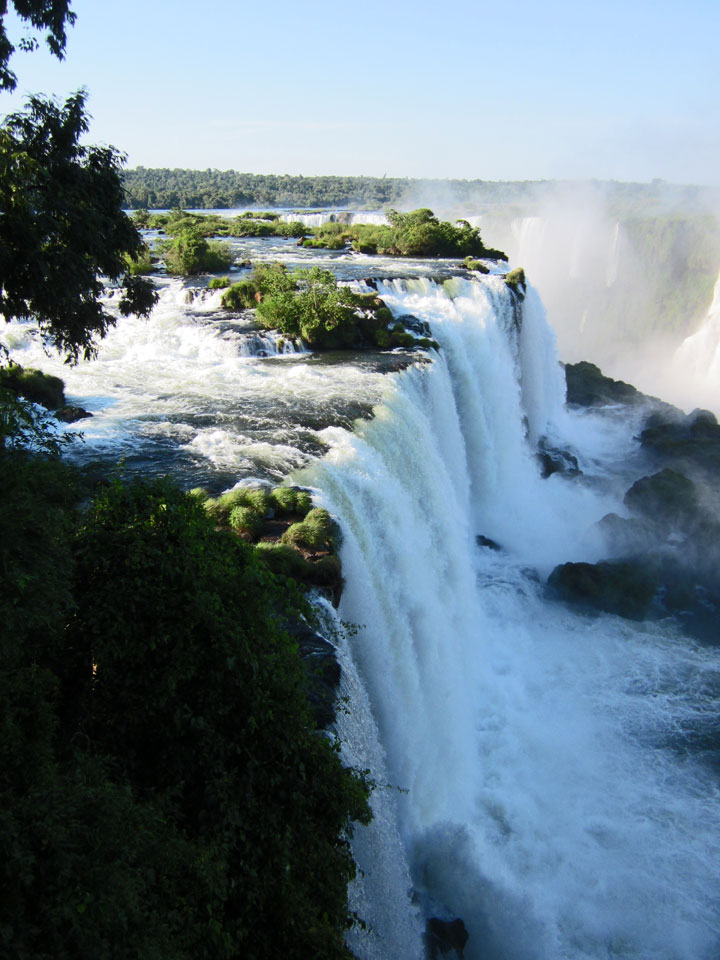

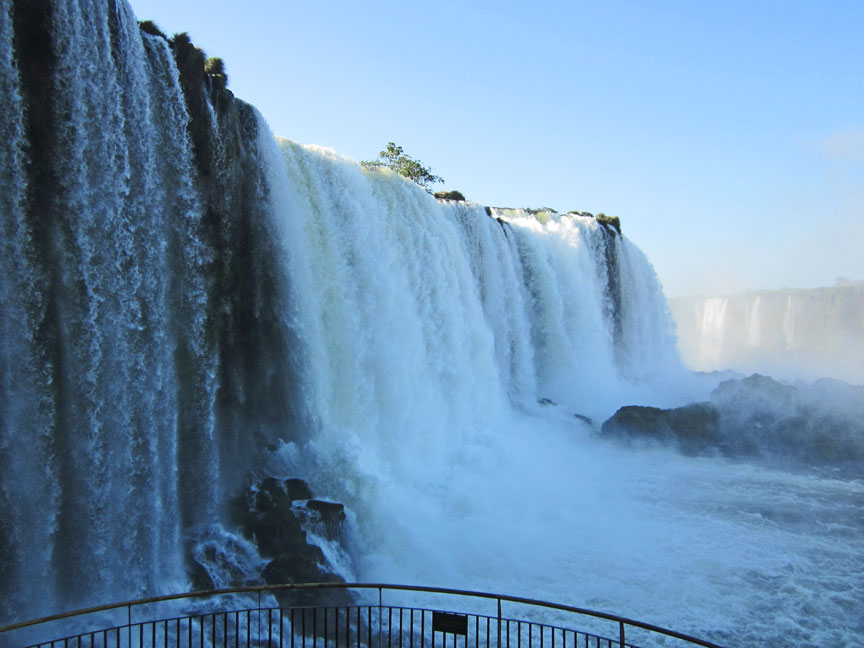
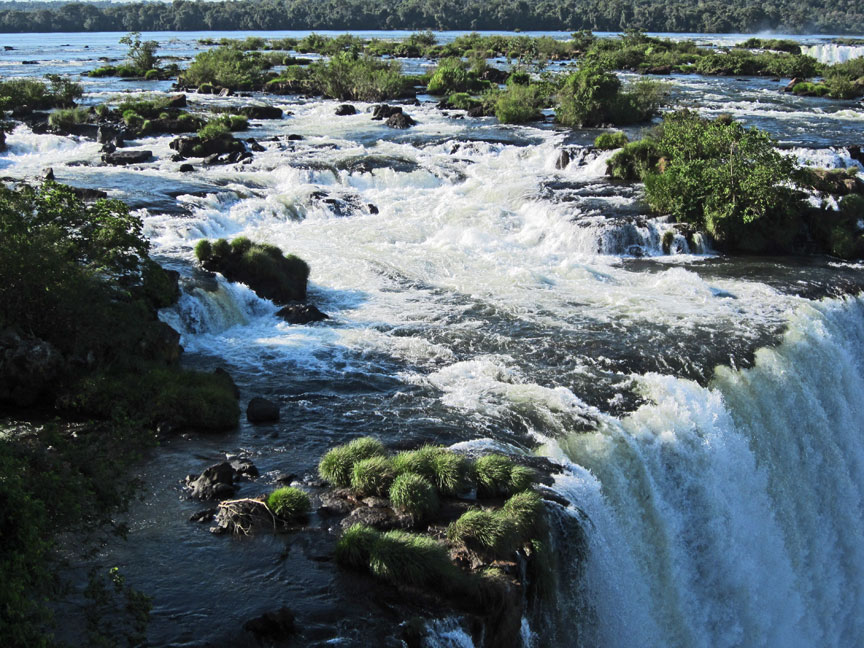
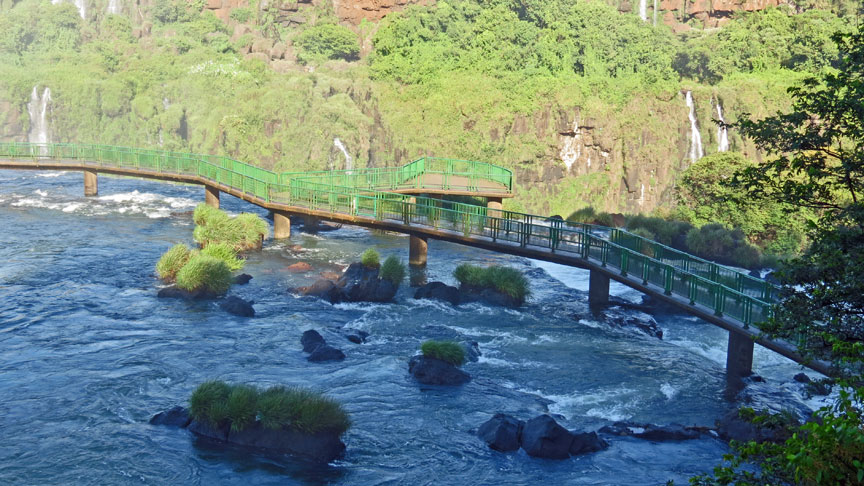
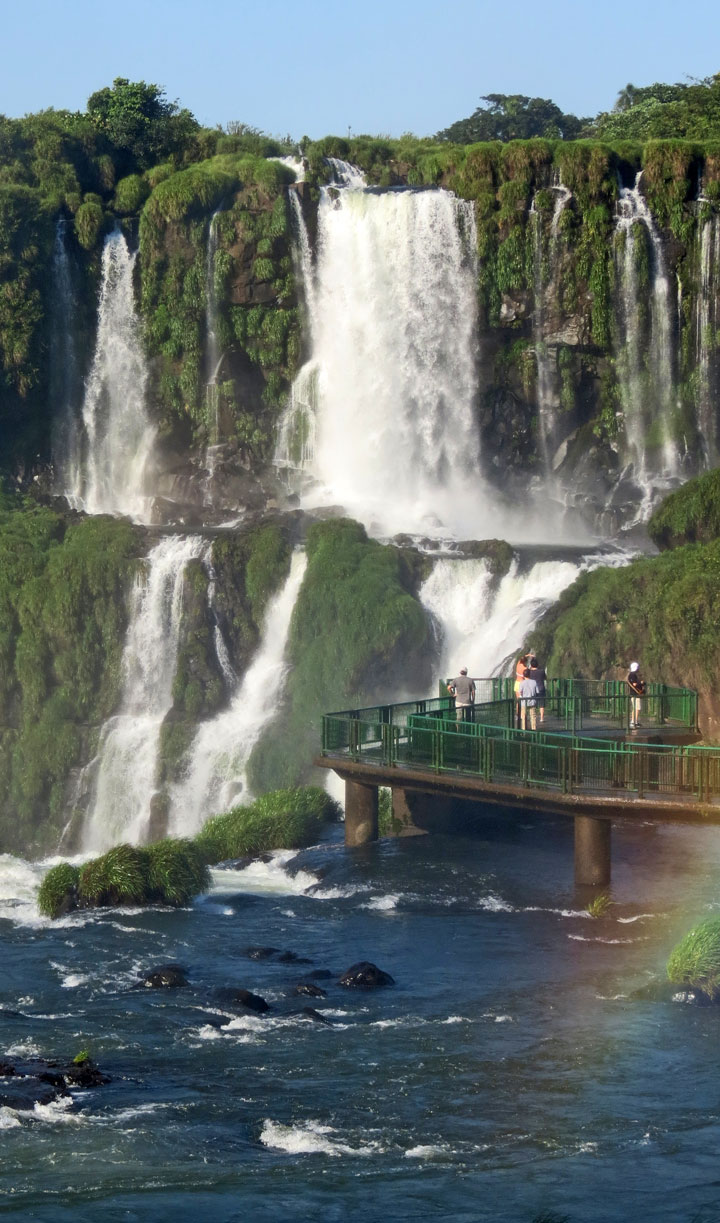
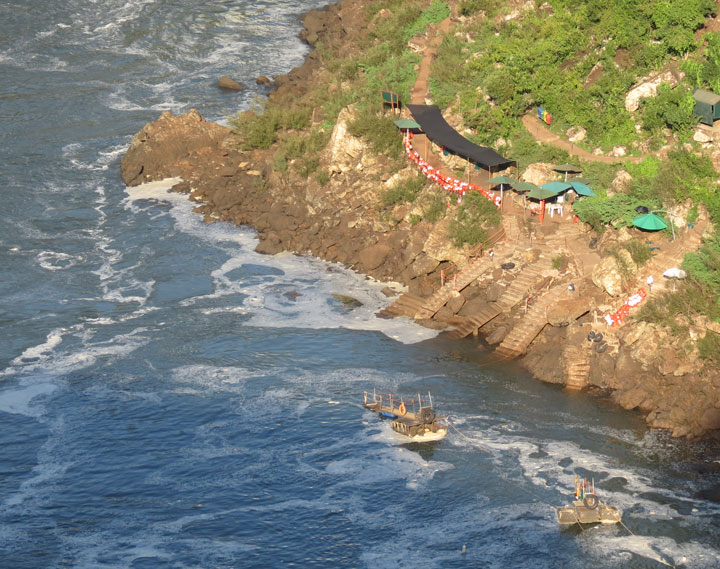
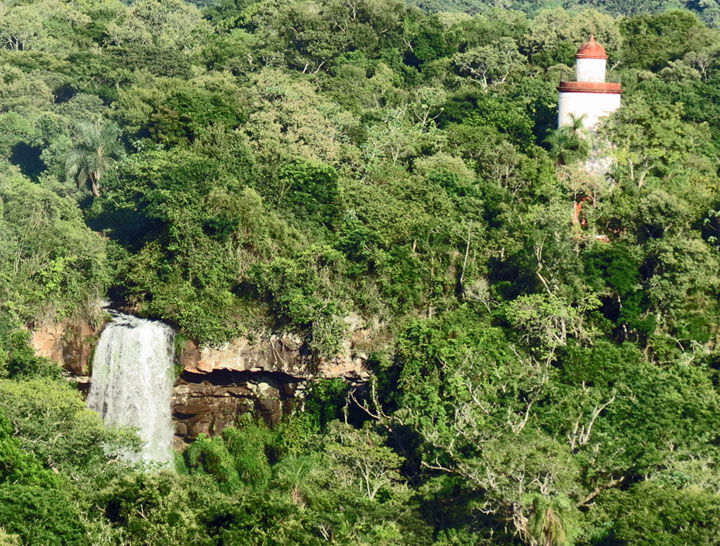
falls and tower on Argentina side
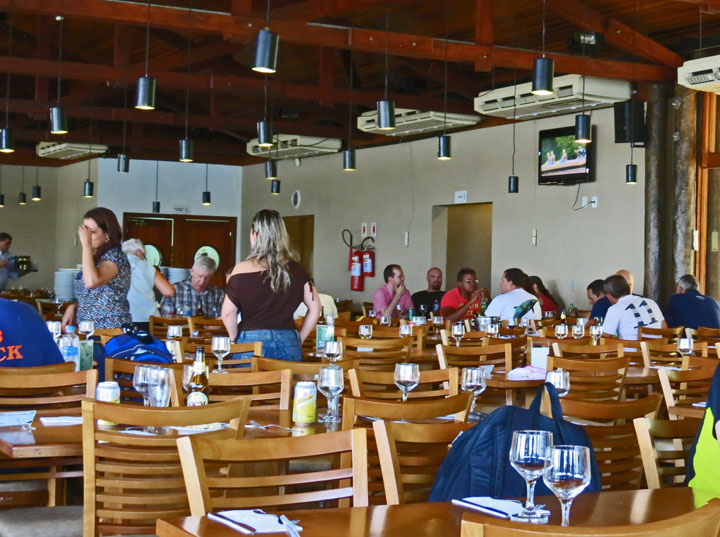
Porto Canoas Restaurant




from the dessert buffet
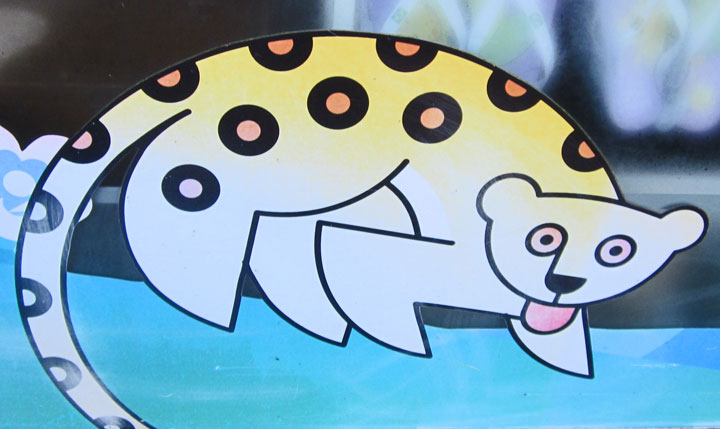
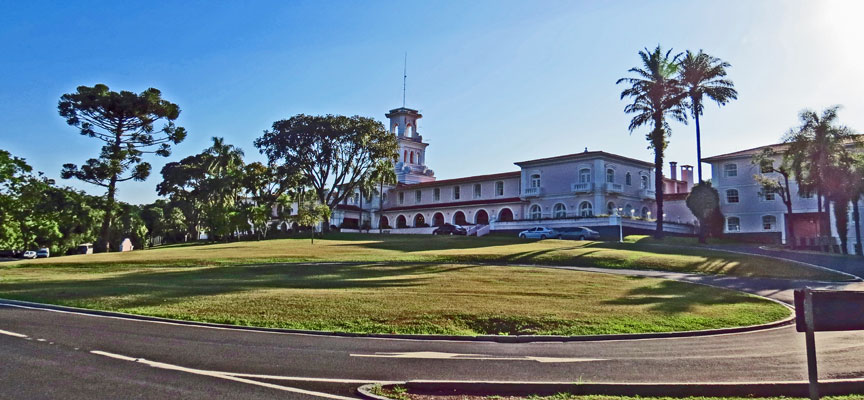
Das Cataratas Hotel